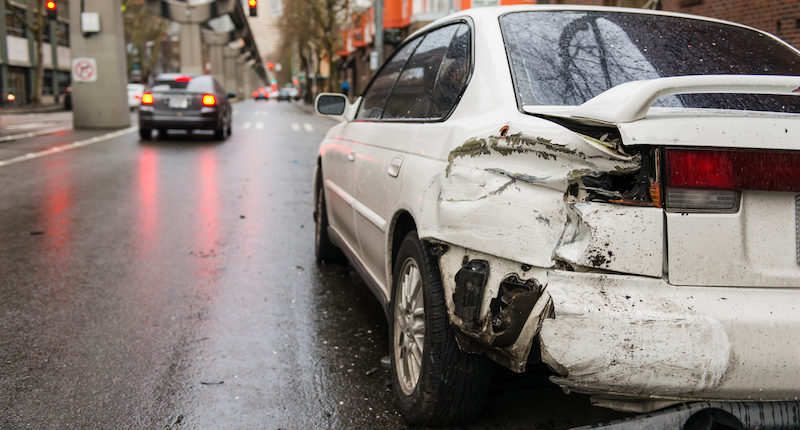Involved in a California Hit and Run Accident? The Next Steps

There are a ton of cars in California, so a hit and run accident does happen from time to time. If you find yourself involved, here is what you should think about doing next.
Read details here.
Introduction
On any normal day, you likely have a list of things to do, whether you have them on an actual list or not. Maybe you just have to drop the kids off at school and head to work, picking them up on your way home. Maybe you have errands like doctor appointments, grocery shopping, or having lunch with a friend. Whatever your day brings, there is likely zero chance that you anticipated a car accident while out on the road. Especially a hit-and-run accident.
So what do you do when your life gets halted due to a hit-and-run accident in California? Here are the next steps.
What is Considered a Hit and Run?
As the name sounds, a hit and run happens when someone involved in an accident leaves the scene of the accident. But that’s not all. It is also considered a hit and run when someone fails to identify themselves with the other parties involved.
Even minor fender benders may have you believing that you can just drive on. No harm was done so why stick around, right? Wrong.
If you were involved in a minor fender bender and it was the other person’s fault – or, if you were the one who caused an accident even if your car didn’t hit anything, you must remain at the accident scene.
Leaving a situation like this may have you facing some charges.
Common Hit and Run Causes
Hit and run accidents can happen for many different reasons. However, there are a few causes that seem to show up most in the reports. They are:
- Distracting driving
- Driving under the influence, drugs or alcohol
- Uninsured vehicles
- Unlicensed driver, suspended or revoked
- Unregistered car
- Self-preservation
California’s Vehicle Code 20001: Felony Hit and Run
No, not all hit and run accidents in California are considered felonies. There are misdemeanor charges, California Vehicle Code 20002. This applies to hit and run accidents that result in property damage only. Any hit and run that involves injury or death is automatically charged as a felony offense. With the help of an attorney, felony hit and run charges are sometimes able to be reduced to a misdemeanor offense. If you find yourself facing either of these, seek legal assistance.
When it comes to California Vehicle Code 20001, it is legally defined as:
(a) Any driver of a vehicle involved in an accident resulting in injury or death to someone else shall immediately stop the vehicle at the scene of the accident and shall fulfill their legal requirements in Vehicle Code Sections 20003 and 20004.
What the Law Says Your Next Steps Should Be – After an Accident
So, let’s say you were involved in an accident in which someone was injured. What do you do? Well, according to California’s Vehicle Code 20003, you absolutely must stop. You are legally required to provide your name, address, identifying information such as your driver’s license, and motor vehicle registration. Law enforcement on the scene is going to ask for this information as well.
Until help arrives, you are legally required to offer “reasonable assistance, including transporting, or making arrangements for transporting, any injured person to a physician, surgeon, or hospital for medical or surgical treatment if it is apparent that treatment is necessary or if that transportation is requested by any injured person.”
If you leave the scene of an accident without providing these things you may be found guilty of a hit and run.
Depending on the type of hit and run, the resulting damage, injury, or death, and so on, charges can range from a minimum fine all the way to a five-year jail term or more.
What an Attorney Says Your Next Steps Should Be – After a Hit and Run Accident
Not abiding by the above can leave you at risk. However, what happens if you are the victim? What happens if someone took off from an accident? What do you do?
First, know that any accident can lead to an overflow of emotions and assessing the situation can be a little overwhelming. When that accident becomes a hit and run accident, it can escalate the situation.
If you find yourself in this situation, attorneys and legal experts want you to keep your emotions in check so that you can carefully and thoughtfully protect your interests.
Collect as much information as you can from the scene. This may mean talking to witnesses. If you are able to put together a picture of the runaway driver’s car, license plate, or description, this can go a long way in helping you recover. If you do happen to speak to any witnesses, be sure to gather their contact information.
Take photos of the accident site and the damage that was caused. Jot down any details that come to mind that may be important in the future. Remember, everything is going to happen fast you will need to work to maintain your calm and focus.
Report the accident to the police. Having an officer come out and write a detailed report is important for both your ability to seek compensation going forward and for your insurance company. You will, of course, want to contact your insurance company when you get home.
If you have been injured – or someone has been injured – as a result of the accident, it is important to seek medical attention. Even the most minor injuries should be checked out as sometimes damage is unseen until it is too late.
Finding the Driver and Getting Compensated
After a hit and run, with the documentation you have provided, law enforcement will go to work to track down that hit and run driver. Sometimes this is successful, other times it is not.
Regardless of what happens, however, there are steps that can be taken for you to get the compensation you deserve due to the accident. Therefore, find an experienced lawyer, provide all the information you have, and work on healing. Let your attorney handle the rest.
Are you in search for a certified attorney to represent you?
Let us help you find one today!

